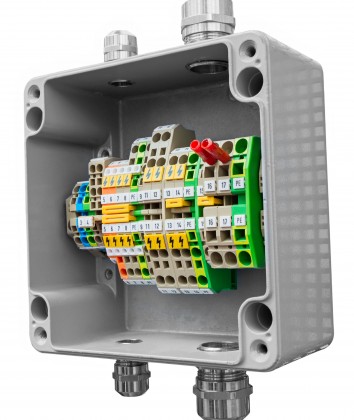- ACRYSTEX MS RESIN
- AGON®
- AMILAN™ PA
- BIFFA r-HDPE
- BIFFA r-PP COMPOUND
- CELANEX® PBT
- CELANYL® PA
- CLEARFLEX LLDPE
- CRASTIN
- DIAKON PMMA
- DISTRUPOL-PRECW
- DRYFLEX® CIRCULAR
- DRYFLEX® GREEN
- DRYFLEX® TPE
- DUTRAL®
- ECOMID® PA
- EGYEUROPTENE
- ELASTOLLAN TPU
- ELTEX MED
- ELTEX P POLYPROPYLENE
- ELVAKON PMMA
- ENTHOVEN RECYCLED PPC
- ERACLENE HDPE
- EUROPRENE®
- EVICOM PVC COMPOUNDS
- FLEXIRENE LLDPE
- FRIANYL® PA
- GREENFLEX EVA
- HY-VIN PVC COMPOUNDS
- HYTREL
- INEOS EBA
- INEOS EMAA
- INEOS LDPE
- INEOS LLDPE
- INEOS PP
- INEOS mLLDPE
- IPETHENE LDPE
- KEPITAL™ POM
- KIBILAC ASA
- KIBISAN SAN
- KIBITON Q-RESIN
- KIBITON TPE
- LG ABS
- LG ASA
- LG LUPOX PC/PBT
- LG LUPOY PC
- LG LUPOY PC/ABS
- LG LUPOY PC/ASA
- LG LUSEP PPS
- LG SAN
- MEDALIST TPE
- MEDIPRENE TPE
- MINLON PA
- MONPRENE TPE
- PEARLENE
- PHARMALENE PE & EVA
- PINNACLE HPP
- PINNACLE ICPP
- PINNACLE RCPP
- POLYCHIM PP
- POLYLAC ABS
- POLYREX PS
- PURGEX CLEANING COMPOUND
- PVOH (Polyvinyl Alcohol)
- RECYCL-IN
- RIBLENE LDPE
- RIGIDEX HDPE
- RIGIDEX MDPE
- RYNITE PET
- SARLINK TPV AND TPE
- THERMOFIL REINFORCED PP COMPOUNDS
- TORAYCON PBT
- TORELINA PPS
- TOYOLAC ABS
- TOYOLAC MABS
- TRIFILON BIOLITE
- TRIFILON REVO
- TRIFILON SWITCH
- WELLS PLASTIC ANTISTATICS
- WELLS PLASTICS ANTIBLOCKS
- WELLS PLASTICS ANTIMICROBIALS
- WELLS PLASTICS ANTIOXIDANTS
- WELLS PLASTICS BLOWING AGENTS
- WELLS PLASTICS FLAME RETARDANT MASTERBATCHES
- WELLS PLASTICS FRAGRANCES
- WELLS PLASTICS OXO BIODEGRADABLES
- WELLS PLASTICS PROCESSING AIDS
- WELLS PLASTICS PURGE AND CLEANING COMPOUNDS
- WELLS PLASTICS SLIP AGENTS
- WELLS PLASTICS UV STABILISERS
- WONDERLITE PC
- WONDERLOY PC/ABS
- ZYTEL PLUS
- ZYTEL HTN
- ZYTEL LCPA
- ZYTEL PA
- ZYTEL RS
Flame Retardancy
Features of Crastin®
Crastin® PBT – the standard for polyester fire safety
Crastin® PBT helps provide additional safety in the event of a fire by not supporting its own flame. Crastin® PBT is able to extinguish its own flame using some specialised flame retardant additive packages even with capabilities down to 0.4mm wall sections.
Most grades also come with official UL yellow card and IEC certifications proving validated test data for the products.
Choose Crastin® PBT for its many properties when it comes to safety:
- Flame retardant properties
- Electrical insulation at temperature
- High Current Tracking Index ratings
- Dimensional stability in moist environments
- Non-halogenated FR chemistry
- Thermal ageing resistance
Crastin® Flame Retardant portfolio
The growing Crastin® flame retardant product consists of 30 product lines of either traditional flame retardant technologies and new non-halogenated grades.
- Traditional flame retardant additive packages
- New non-halogenated technologies
- Unfilled FR grades
- Low shrinkage FR grades
- Super tough FR grades
- Low warpage FR grades
- Metal replacement FR Technologies
- Hydrolysis resistant FR packages

With miniaturisation, electrical terminal bocks need flame retardancy in very thin wall sections.
Crastin® non-halogenated FR technology
Non-halogenated flame retardant chemistry is the latest technology to both help the environment and comply with the latest ROHS and WEEE directives by avoiding antimony and halogenated chemicals. The technology has been around for some time, but Celanese patented non-halogenated technology helps maintain mechanical properties, CTI ratings and reduce wear to moulding machines and mould tools.
When replacing traditional halogenated flame retardant chemistries, we need to ensure we retain crucial properties such as mechanical properties, ease of processing and electrical resistance, as the latest non-halogenated chemistries can compromise these areas. As a general rule, using non-halogenated flame retardant chemistry, you need to add more to the formulation to make it as effective as older technologies. This then means less physical polymer and more flame retardant minerals.
Crastin® FR684NH1 - non-halogenated FR with excellent mechanical properties
Crastin® FR684NH1 has become a leading grade for electrical applications whether it be for electrical vehicles, commercial circuit breakers or other applications demanding high rigidity, non-halogenated flame retardancy and excellent electrical insulation properties. The specialised formulation pioneered by Celanese balances the needs of non-halogenated chemistry, but inducing brittleness. Comparing this grade with standard Crastin® PBT FR grades, we can see that we still have metal like rigidity using glass fibre technology, but also maintain a good elongation at break.
Crastin® FR684NH1 vs. traditional flame retardant grades
Crastin® FR684NH1 – no compromise to the mechanical properties when looking at the tensile modulus and elongation at break. Elongation at break is a great measure to compare when looking at the new versus traditional technologies.
Crastin® FR684NH1 – using the latest non-halogenated flame retardant systems, we can still achieve a UL94 V0 rating down to 0.75mm’s providing options around miniaturisation.
Crastin® FR684NH1 – excellent thermal resistance and best-in-class Current Index tracing results (CTI) providing the extra electrical safety you need in the event of a surface contamination providing a potential electrical short circuit pathway.
Explore other features of Crastin®
© 2025 Distrupol. All rights reserved.